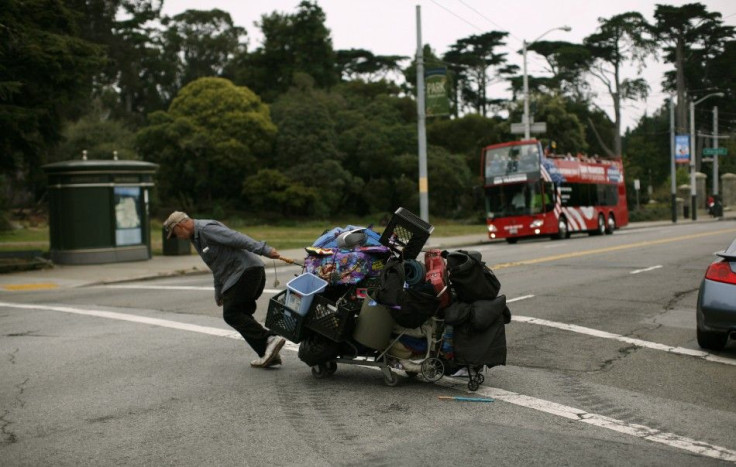U.S. Poverty Data: 1 in 15 Live in Extreme Poverty - a Record

The number of America's poorest residents reached 20.5 million -- 1 in 15 people -- last year, according to data from the U.S. Census Bureau, the highest rate in the 35 years the agency has tracked those statistics.
The Census Bureau is scheduled to release an alternate supplemental poverty measure meant to capture a more accurate picture of the contemporary social and economic realities driving poverty next week.The agency provided a bleak glimpse into the state of American poverty to give a preview of what can be expected.
The report, based on an analysis of the most recent Census data, found that the number of poor individuals rose by 12.3 percent in the last decade, increasing the overall number of Americans in poverty to an all-time high of 46.2 million.
The poverty threshold for a family of four is currently $22,314, according to the Census Bureau. A single individual making less than $11,139 per year is considered to be living in poverty.
Poverty by Region
Even though a record-number of people are now poor, it has not affected all Americans equally.
Households in the Midwest, South and West experienced declines in real median income between 2009 and 2010, while the Northeast has not seen any statistical changes. Due to a struggling manufacturing economy, a separate analysis by the Brookings Institution reports the Great Lakes metro regions of Toledo, Daton and Youngstown, Ohio, as well as Detroit, Mich. experienced some of the largest growths in concentrated poverty, nearly doubling in some areas between 2000 and 2009.
Meanwhile, cities in the Southern U.S. experienced some of the most significant increases (El Paso, Texas; Baton Rouge, La.; Jackson, Miss.) and decreases (Charleston, S.C.; Virginia Beach, Va.).The Census Bureau reports the South was the only region to show statistically significant increases in both the poverty rate as well as the number of individuals living in poverty.
According to Brookings, poverty rose more than twice as fast in the suburbs, increasing by 41 percent compared to 17 percent in cities. Many residents of extreme-poverty neighborhoods between 2005 and 2009 were more likely to be white, high school or college graduates and not receive public benefits, suggesting that many individuals have been hampered by the economic recession.
However, the Census Bureau reports that minorities, especially blacks and Hispanics, are still considerably more likely to be poor than white Americans. Twenty-six percent of Hispanics are living in poverty, compared to 27 percent of blacks and 13 percent of whites.
About half of those living below the poverty line were classified as the poorest of the poor, meaning they live at less than 50 percent of the poverty line. In 2010, that would mean an individual income below $5,570; for a family of four, below $11,157.
Poverty Metric Revision Ahead
The faces of the poor are expected to change once the new census data is released next week. The official way that the government has been measuring poverty is based on a system created in the 1960s by the statistician Mollie Orshansky, which was reportedly meant to be a placeholder until something more sophisticated came along -- except it never did.
The system only counts cash as income and ignores expenses such as taxes and medical costs. Orshansky used the cost of a nutritionally adequate diet as the basis of her poverty threshold, since food was often the biggest expense for families during that era. Now, as food costs are far from the largest share of a typical budget, the model is extremely outdated.
Experts anticipate Monday's report will reflect an even higher percentage of those in poverty, especially among the elderly and working class families. The current system overlooks the income poor people receive from government assistance such as food stamps and tax credits, The New York Times reports. This often boosts the perceived income of those who are technically poor but, statistically, are above the poverty threshold.
For instance, The Times reports that an individual making an annual income of about $7,500 to support a family of three, who also receives $3,600 a year in food stamps, $1,800 in nutritional supplements, a tax credit of $4,000 and almost $1,900 in housing aid is seen as having an annual income of about $18,800. While that certainly isn't much, it is still below the current poverty threshold of $17,374 for a family of three.
The new data will include details on individuals who receive non-cash help, and will take into account spending on necessities such as healthcare and commuting, rather than taxable income alone.
© Copyright IBTimes 2025. All rights reserved.




















